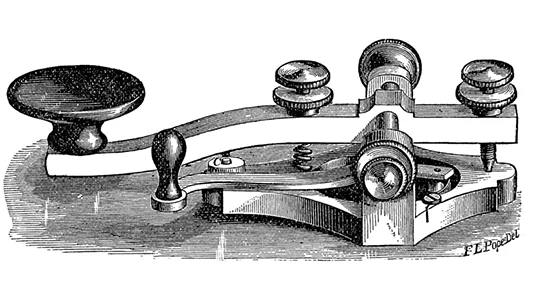I read a story in The New York Times early this year (2019) about the ability of a certain fungi to send warning signals to other parts of its body when predators are attacking. This fungi is the “gray shag” or “inky cap” mushroom, the Times reported. The story went on to say that when under attack by fungi-eating nematodes, the mushroom sends out the warning to other parts of its body and then produces a nasty toxin the nematodes don’t like.
While not much is known about the mechanism by which fungi send signals, the article noted that scientists have identified both electrical and chemical signaling in animals and plants. Those signals activate the fight or flight reaction in animals and other defensive mechanisms in plants.
What’s the point of my bringing this up?
Survival.
Whether it’s the survival of a mushroom, a plant, an animal, a human being, or legal entities, communications is essential to success and survival.
In all mammals, it’s necessary for the body to communicate within itself to determine hunger, thirst and safety. By extension, it’s necessary for individuals and groups to communicate with others to convey when and where food and water is available, to protect those sources from being depleted or harmed, and to indicate when it was time to move on and find other sources.
Signals – verbal and physical – once were the only means of guidance and warnings. Later came tools – noisemakers and markers. As humans organized into units that became larger and larger, other tools and symbols came into play to communicate over a longer and longer distances. Trails and roads emerged for trade purposes and cooperation. But they also led to conflict.
As groups expanded, warfare and development of coalitions required even more sophisticated means of communications.
Some of those earliest methods, beyond the initial grunts and shouts and, ultimately, language, included fire and smoke (dating back to the 18th Century BCE), drums and horns, trail markings, runners, and on to pictographs, petroglyphs, and ostraca (shards with markings).
Cuneiform writing dates back to about 3200 BCE in Sumer (southern Iraq), and Egyptian hieroglyphics emerged at about the same time. The next writing system came out of China around 1500 BCE in China. The Phoenician alphabet emerged around 1200 BCE in the area of modern day Israel, Lebanon and Syria.
With the emergence of writing came the ability to transport documents – clay tablets, metal and wood engravings, papyrus, parchment and paper – that could not easily be misinterpreted; although one has to wonder how quickly fake or false documents emerged with intent to deceive.
But once documents were transportable, we find a rapid acceleration of delivery systems leading up to our modern day communications.

Consider: Runners, horses, other mammalian carriers, and pigeons were delivery methods in use before the mechanized age. Rafts, carts and wagons then predated ships, trains, autos and planes that overlapped with the early stages of the electronic age. From there we jump to telegraphy, telephone, facsimile, radio, television and satellites, with receivers both fixed and portable. Refinements along the way produced multiplex delivery systems that involved frequency division (filtering sounds to deliver various teletype services) and time division (dissembling and reassembling time sequences for the same purpose).
Today, internet, satellite and wireless technology lead the way. Communications now is accomplished at hyper-speed, and that brings new opportunities along with new problems.
On the plus side, transactions can be completed in in instant. Crisis communications can be launched immediately. Queries can be addressed quickly. News and other information can be updated and disseminated without delay.
But false and misleading information also is easy to disseminate. It can be done instantly on a whim, or with deliberation, and either circulated widely, or aimed at a targeted audience.
Companies and high-profile individuals now must monitor the web 24/7 for attacks on credibility, to guard against misunderstandings spinning out of control, to stay atop broadcast or published news and information (positive or negative), and for a continual assessment of reputation.
Communications managers and others now have the ability to make information constantly available, and continually updated, on company web sites. And fresh news or updates can automatically be pushed out to targeted groups and individuals, whether within the news media or to other interested followers.
Events now are easy to live stream for select audiences, or to the general public, then later made available on demand to those who could not catch the event live.
Multimedia press kits can be assembled and distributed in just a few hours.
In short, modern communications makes protecting your name and telling your story easier. Technologies may have changed, but communications for survival is much simpler.
I read a story in The New York Times early this year (2019) about the ability of a certain fungi to send warning signals to other parts of its body when predators are attacking. This fungi is the “gray shag” or “inky cap” mushroom, the Times reported. The story went on to say that when under attack by fungi-eating nematodes, the mushroom sends out the warning to other parts of its body and then produces a nasty toxin the nematodes don’t like.
While not much is known about the mechanism by which fungi send signals, the article noted that scientists have identified both electrical and chemical signaling in animals and plants. Those signals activate the fight or flight reaction in animals and other defensive mechanisms in plants.
What’s the point of my bringing this up?
Survival.
Whether it’s the survival of a mushroom, a plant, an animal, a human being, or legal entities, communications is essential to success and survival.
In all mammals, it’s necessary for the body to communicate within itself to determine hunger, thirst and safety. By extension, it’s necessary for individuals and groups to communicate with others to convey when and where food and water is available, to protect those sources from being depleted or harmed, and to indicate when it was time to move on and find other sources.
Signals – verbal and physical – once were the only means of guidance and warnings. Later came tools – noisemakers and markers. As humans organized into units that became larger and larger, other tools and symbols came into play to communicate over a longer and longer distances. Trails and roads emerged for trade purposes and cooperation. But they also led to conflict.
As groups expanded, warfare and development of coalitions required even more sophisticated means of communications.
Some of those earliest methods, beyond the initial grunts and shouts and, ultimately, language, included fire and smoke (dating back to the 18th Century BCE), drums and horns, trail markings, runners, and on to pictographs, petroglyphs, and ostraca (shards with markings).
Cuneiform writing dates back to about 3200 BCE in Sumer (southern Iraq), and Egyptian hieroglyphics emerged at about the same time. The next writing system came out of China around 1500 BCE in China. The Phoenician alphabet emerged around 1200 BCE in the area of modern day Israel, Lebanon and Syria.
With the emergence of writing came the ability to transport documents – clay tablets, metal and wood engravings, papyrus, parchment and paper – that could not easily be misinterpreted; although one has to wonder how quickly fake or false documents emerged with intent to deceive.
But once documents were transportable, we find a rapid acceleration of delivery systems leading up to our modern day communications.


Consider: Runners, horses, other mammalian carriers, and pigeons were delivery methods in use before the mechanized age. Rafts, carts and wagons then predated ships, trains, autos and planes that overlapped with the early stages of the electronic age. From there we jump to telegraphy, telephone, facsimile, radio, television and satellites, with receivers both fixed and portable. Refinements along the way produced multiplex delivery systems that involved frequency division (filtering sounds to deliver various teletype services) and time division (dissembling and reassembling time sequences for the same purpose).
Consider: Runners, horses, other mammalian carriers, and pigeons were delivery methods in use before the mechanized age. Rafts, carts and wagons then predated ships, trains, autos and planes that overlapped with the early stages of the electronic age. From there we jump to telegraphy, telephone, facsimile, radio, television and satellites, with receivers both fixed and portable. Refinements along the way produced multiplex delivery systems that involved frequency division (filtering sounds to deliver various teletype services) and time division (dissembling and reassembling time sequences for the same purpose).
Today, internet, satellite and wireless technology lead the way. Communications now is accomplished at hyper-speed, and that brings new opportunities along with new problems.
On the plus side, transactions can be completed in in instant. Crisis communications can be launched immediately. Queries can be addressed quickly. News and other information can be updated and disseminated without delay.
But false and misleading information also is easy to disseminate. It can be done instantly on a whim, or with deliberation, and either circulated widely, or aimed at a targeted audience.
Companies and high-profile individuals now must monitor the web 24/7 for attacks on credibility, to guard against misunderstandings spinning out of control, to stay atop broadcast or published news and information (positive or negative), and for a continual assessment of reputation.
Communications managers and others now have the ability to make information constantly available, and continually updated, on company web sites. And fresh news or updates can automatically be pushed out to targeted groups and individuals, whether within the news media or to other interested followers.
Events now are easy to live stream for select audiences, or to the general public, then later made available on demand to those who could not catch the event live.
Multimedia press kits can be assembled and distributed in just a few hours.
In short, modern communications makes protecting your name and telling your story easier. Technologies may have changed, but communications for survival is much simpler.
Related Posts
The 3 Biggest Problems Facing Comms Departments in 2020
Smaller budgets, higher expectations, a hyper-political media environment, a global pandemic—the road for corporate communications departments hasn’t been easy this year. Along with the kind of evergreen challenges that have always faced comms departments, this [...]
Here’s How Live Streaming Could Transform Your Content Distribution
We’ve all experienced the way video streaming has transformed the entertainment industry. But did you know that streaming is poised to transform your communications department as well? Imagine if, instead of sending out mass emails [...]
Here’s How Your Communications Department Can Add FTE—Without Hiring
Communications departments are used to working with what they’ve got, even if what they’ve got isn’t nearly enough. Usually, that means wearing different hats—lots of different hats. From writing a press release, to editing photos, [...]



